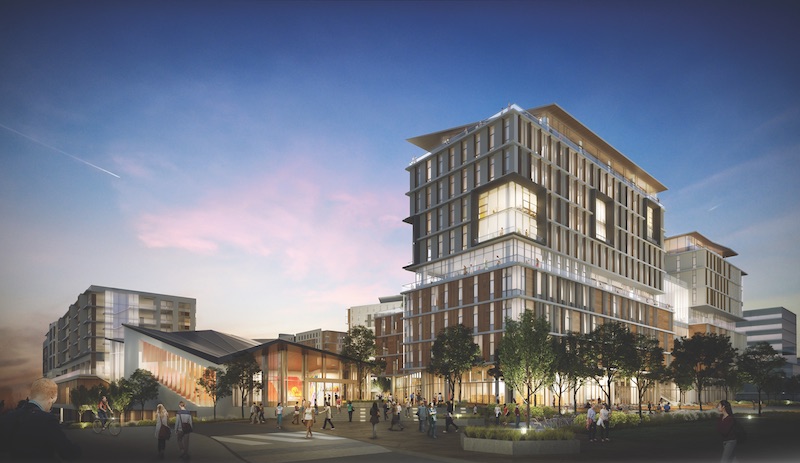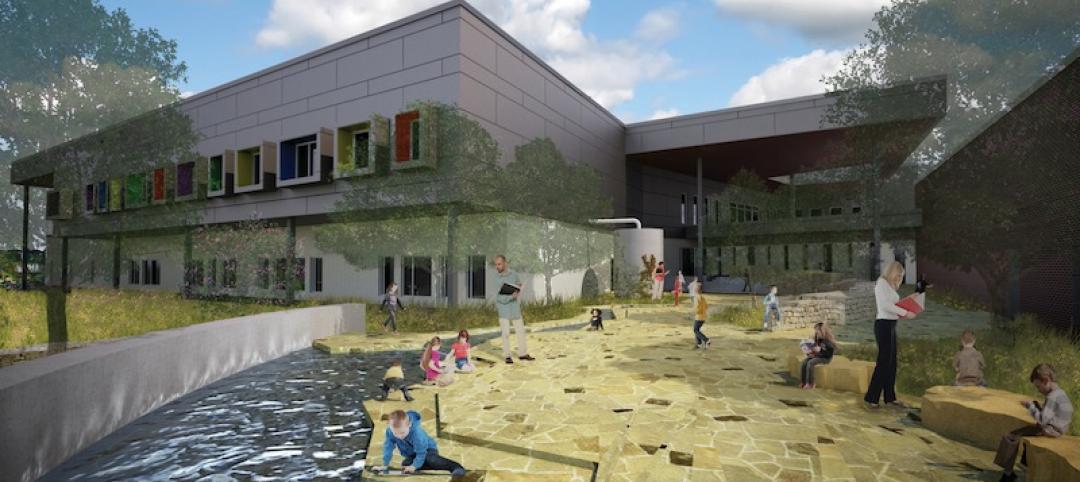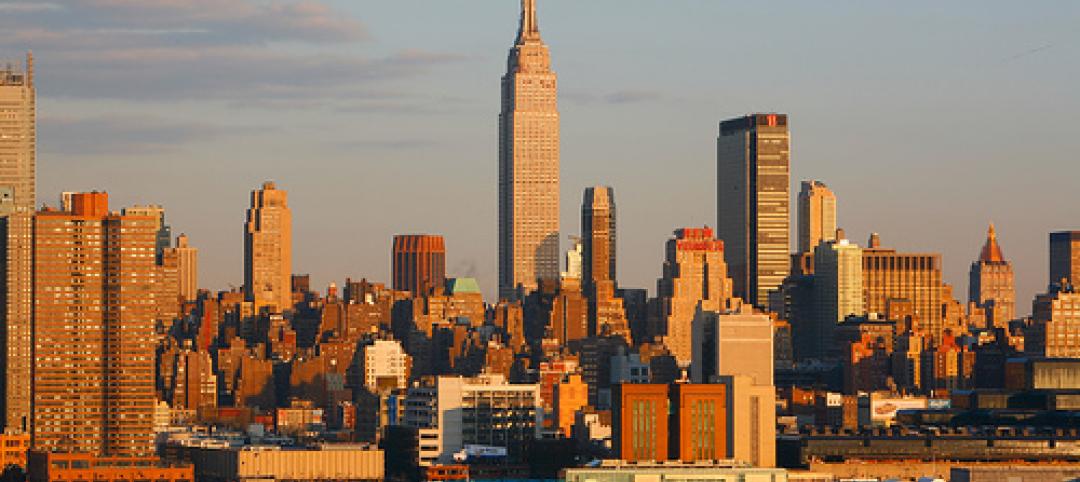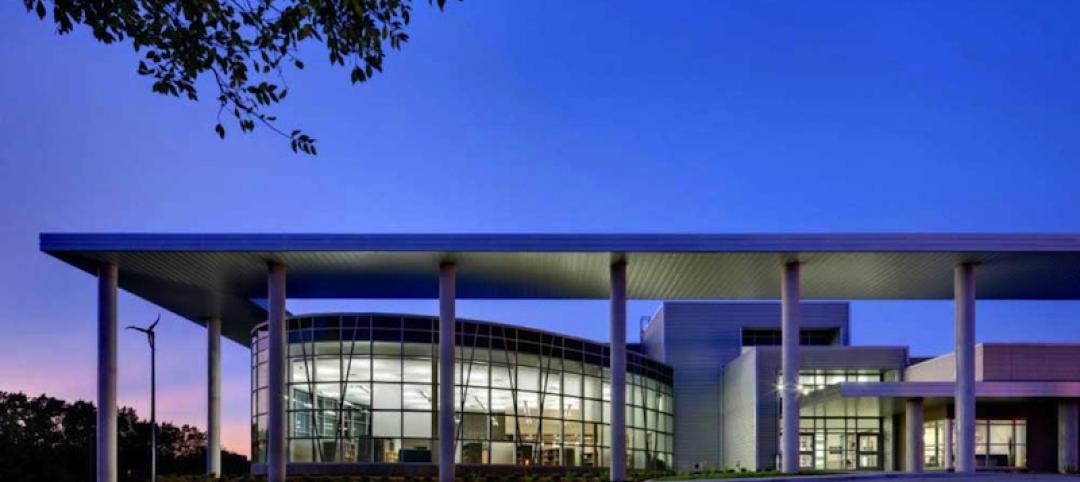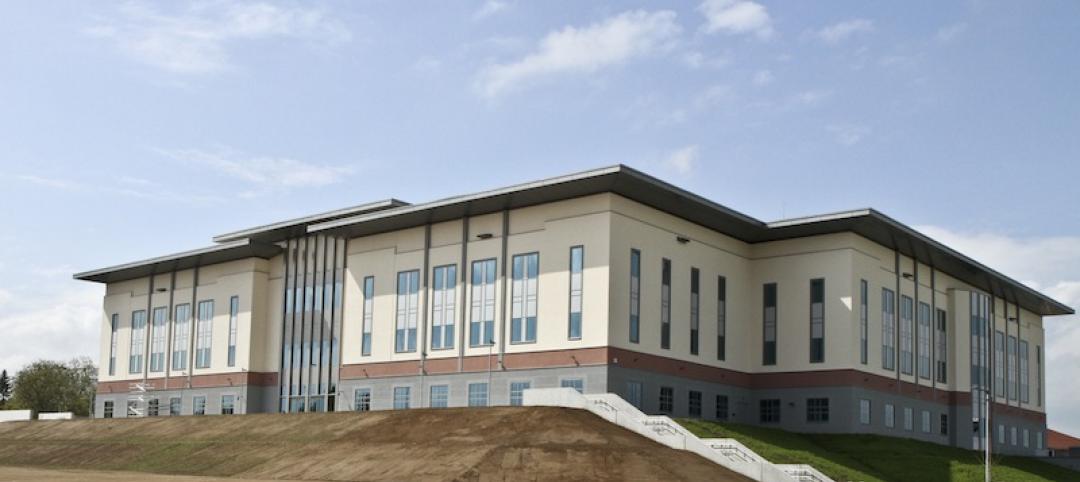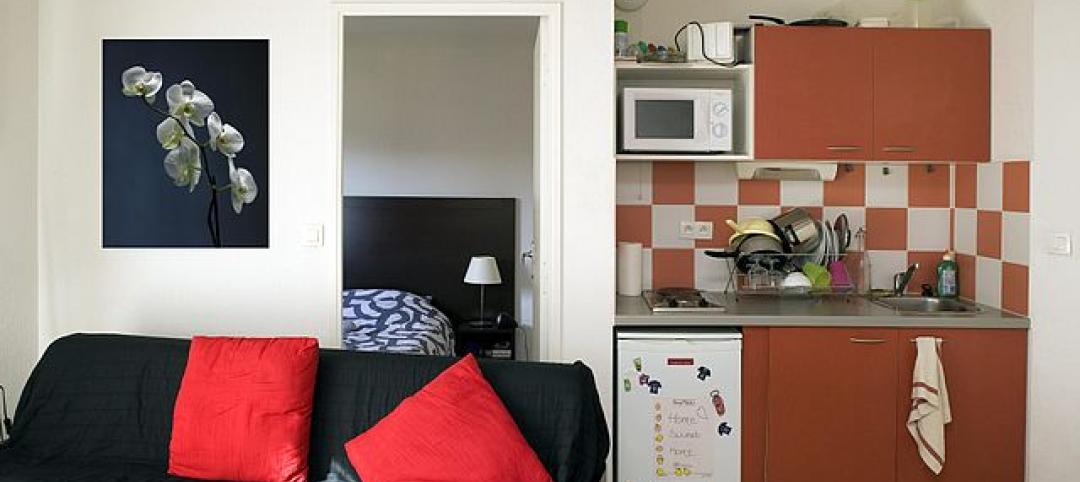Cities and counties around the country are taking sustainability to new heights—and architecture firms are helping them raise the stakes in green design. San Diego and New York are among a growing number of local jurisdictions that are expanding the scope of their energy- and water-use requirements for new construction. The County of San Diego has committed to making all new buildings achieve zero net energy—preferably to produce more energy than they consume through on-site energy generation.
In New York City, staff members at architectural firm FX Collaborative (formerly FXFowle) are actively involved in various task forces related to green building codes and policy. Lately, the focus has been on setting energy use intensity, or EUI, targets for buildings, as opposed to energy cost savings, which is the metric used by LEED and municipal energy codes, says Ilana Judah, AIA, OAQ, LEED AP BD+C, CPHD, FX Collaborative’s Principal and Director of Sustainability. The city recently passed a law that will grade a building’s performance and require the owner to post the grade in a highly
visible location.
Energy-efficiency requirements are getting tougher. Strategies that once were optional are now being incorporated into building and energy codes. Massachusetts now requires multifamily residential buildings in designated Green Communities to comply with higher HERs ratings, Energy Star certification v3.1, or Passive House certification PHIUS+ 2015.
See Also: Top 160 Green Building Architecture + AE Firms
Linda Toth, a Sustainability Specialist in Gensler’s Washington, D.C., office, says a growing number of jurisdictions in every climate zone have green-building mandates coming down the pike for net-zero and net-zero-capable projects. D.C. is currently working on plans to be one of the first municipalities to require net-zero energy for all new residential and commercial construction by 2026, as outlined in the District’s 2016 Clean Energy DC agenda.
Add to that Climate Ready DC, the District’s latest plan to adapt to changing climatic conditions that could produce dangerous heat waves, more severe storms, and drastic flooding that could impact the city’s many historic buildings as well as newer structures. Among the smart-building means to help achieve this goal: high-performing building enclosures, redundant energy and water systems, and correct siting of mechanical systems.
One new form of energy regulation is so-called solar carve-outs, which set specific goals for electricity generated from solar panels. According to the Database of State Incentives for Renewables & Efficiency (DSIRE, at bit.ly/2I5mXxu), 22 states and D.C. have set renewable portfolio standards with solar or distributed-generation provisions. The District of Columbia wants to generate the equivalent of 5% of its buildings’ energy consumption from solar by 2032.
NEW RATINGS SCHEMES SPROUTING UP
In today’s policy climate, “building green” extends well beyond reducing a structure’s carbon footprint. “Energy and water efficiency are great catalysts for larger conversations around sustainability and resilience,” says Benjamin Holsinger, a Sustainability and Wellness Consultant in Gensler’s Washington, D.C., office.
While LEED continues to be the most commonly used framework for green buildings, it’s no longer the only show in town. Design firms are finding that clients are starting to include newer rating systems like SITES, Envision, Fitwel, WELL, and Parksmart in their project requirements.
Last year, The Miller Hull Partnership, a Seattle-based architecture firm, led a so-called Progressive Design-Build team—Arup, KPFF Consulting Engineers, GGN (landscape architect), O’Brien & Company (sustainability consultant), and Mortenson Construction—on the University of Washington’s West Campus Utility Plant. The $35 million facility provides 4,500 tons of chiller capacity and six megawatts of emergency power; it can reach 10,500 tons of chiller capacity and 12 MW of emergency power without modifying the building.
The project achieved Envision Gold Certification from the Institute of Sustainable Infrastructure, the first Envision-certified project at the University of Washington and the first university building in the U.S. to be Envision-certified. Envision is an independent third-party rating system designed specifically to evaluate, grade, and recognize sustainable infrastructure projects.
PASSIVE MEASURES GAINING TRACTION
Clients are pressing their design firms to verify that buildings will perform as promised. To that end, FX Collaborative’s Judah is convinced that passive building practices could be “the future of green building.”
This possibility is already evident on certain academic campuses. In Maine, six of the eight commercial passive house projects that have been built or planned are at private schools. One of these institutions, Bowdoin College, was scheduled to start four residence halls—a total of 47,877 sf of construction—that will comply with Passive House performance requirements. Earlier this year, HKS Architects, in partnership with Clark Construction, broke ground on the University of California, San Diego’s Living and Learning Neighborhood at North Torrey Pines, a seven-building, 1.5-million-sf mixed-use complex. Its passive features range from operable windows for natural ventilation to a modular micro-aerobic digester that will process food waste into biogas and fertilizer for community gardens.
Clients are increasingly engaged with wellness in design, thanks in part to the rollout of LEED v4. They are also expressing greater familiarity with new rating systems, notably the WELL Building Standard, Fitwel, and the Living Building Challenge. They are seeking to go beyond ASHRAE’s minimal ventilation rates and to reduce their use of materials with chemicals of concern.
Gensler has created its proprietary WorkWell methodology. According to Gregory Plavcan, an Associate and Sustainability Specialist, WorkWell gives Gensler’s designers a greater insight on ways to incorporate a client organization’s core values into its wellness regimen.
Related Stories
| Dec 17, 2013
Nation's largest net-zero K-12 school among winners of 2013 Best of Green Schools award
The Lady Bird Johnson Middle School in Irving, Texas, was named a winner of USGBC's annual award, along with nine other schools, individuals and communities working toward the common goal of healthy, high-performing learning places.
| Dec 16, 2013
Irving, Texas building state’s second net-zero school
Lee Elementary School, scheduled to open in fall 2014, will be net-zero-ready, and if the school board decides to sell district bonds and allow the purchase of additional solar panels, will be a true net-zero facility.
| Dec 10, 2013
16 great solutions for architects, engineers, and contractors
From a crowd-funded smart shovel to a why-didn’t-someone-do-this-sooner scheme for managing traffic in public restrooms, these ideas are noteworthy for creative problem-solving. Here are some of the most intriguing innovations the BD+C community has brought to our attention this year.
| Dec 9, 2013
What is life cycle cost optioneering?
Life cycle cost optioneering is a way of assessing alternative design options, analyzing their long-term capital and operational costs to identify those with the lowest price tag, over the entire life cycle.
| Dec 9, 2013
Skaneateles, N.Y., converts old firehouse to net-zero village hall
The Finger Lakes village of Skaneateles, N.Y., renovated its vacant firehouse into Skaneateles Village Hall, the first municipal net-zero energy building in the state of New York.
| Dec 2, 2013
Security is key component of Army’s net-zero assessment strategy
For the U.S. Army, creating secure sources of energy is an important driver for its net zero goals. Critical military missions are at a high risk of failure in the event of an electric grid failure, according to a Defense Science Board report.
| Nov 27, 2013
LEED for Healthcare offers new paths to green
LEED for Healthcare debuted in spring 2011, and certifications are now beginning to roll in. They include the new Puyallup (Wash.) Medical Center and the W.H. and Elaine McCarty South Tower at Dell Children’s Medical Center of Central Texas in Austin.
| Nov 27, 2013
University reconstruction projects: The 5 keys to success
This AIA CES Discovery course discusses the environmental, economic, and market pressures affecting facility planning for universities and colleges, and outlines current approaches to renovations for critical academic spaces.
| Nov 25, 2013
New California codes moving state toward net-zero requirements
Under the new Title 24, all new residential construction must be net zero by 2020, with all new commercial buildings achieving this goal by 2030.
| Nov 22, 2013
Health Product Declaration Collaborative to develop protocol for third-party verification of HPDs
Seven leading product sustainability assessment companies partner with the HPD Collaborative to develop the verification and quality assurance protocols.


